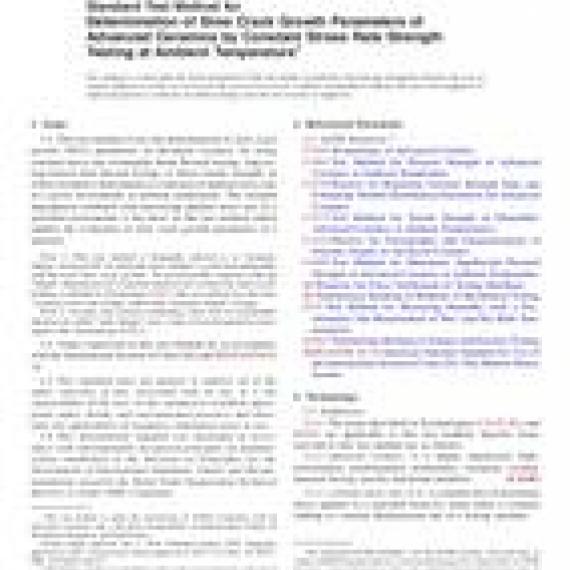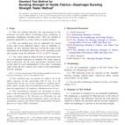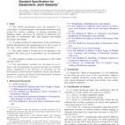No products
ASTM C1368-18
ASTM C1368-18 Standard Test Method for Determination of Slow Crack Growth Parameters of Advanced Ceramics by Constant Stress Rate Strength Testing at Ambient Temperature
standard by ASTM International, 01/01/2018
Full Description
1.1This test method covers the determination of slow crack growth (SCG) parameters of advanced ceramics by using constant stress rate rectangular beam flexural testing, ring-on-ring biaxial disk flexural testing, or direct tensile strength, in which strength is determined as a function of applied stress rate in a given environment at ambient temperature. The strength degradation exhibited with decreasing applied stress rate in a specified environment is the basis of this test method which enables the evaluation of slow crack growth parameters of a material.
Note 1:This test method is frequently referred to as dynamic fatigue testing (1-3)2 in which the term fatigue is used interchangeably with the term slow crack growth. To avoid possible confusion with the fatigue phenomenon of a material which occurs exclusively under cyclic loading, as defined in Terminology E1823, this test method uses the term constant stress rate testing rather than dynamic fatigue testing.
Note 2:In glass and ceramics technology, static tests of considerable duration are called static fatigue tests, a type of test designated as stress rupture (See Terminology E1823).
1.2Values expressed in this test method are in accordance with the International System of Units (SI) and IEEE/ASTM SI 10.
1.3This standard does not purport to address all of the safety concerns, if any, associated with its use. It is the responsibility of the user of this standard to establish appropriate safety, health, and environmental practices and determine the applicability of regulatory limitations prior to use.
1.4This international standard was developed in accordance with internationally recognized principles on standardization established in the Decision on Principles for the Development of International Standards, Guides and Recommendations issued by the World Trade Organization Technical Barriers to Trade (TBT) Committee.


































